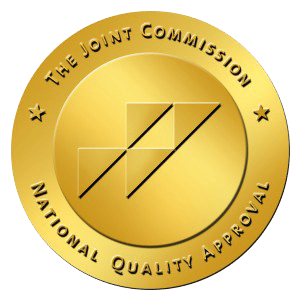Fentanyl withdrawal is one of the most challenging aspects of overcoming addiction to this powerful synthetic opioid. Understanding the timeline and what to expect can help you prepare for the journey ahead and make informed decisions about getting professional help.
If you’re struggling with fentanyl addiction in Southern California, knowing the withdrawal process can be the first step toward recovery.
Understanding Fentanyl Withdrawal
Fentanyl is significantly more potent than other opioids – up to 100 times stronger than morphine, according to the Drug Enforcement Administration (DEA). This intense potency means withdrawal symptoms can be more severe and longer-lasting than with other opioids.
When someone uses fentanyl regularly, their body becomes physically dependent on the drug to function normally. When fentanyl use stops, the body struggles to regain balance, leading to uncomfortable and sometimes dangerous withdrawal symptoms.
The National Institute on Drug Abuse reports that fentanyl’s short half-life means withdrawal symptoms can begin within hours of the last dose, making medical supervision crucial for safety and comfort.
Fentanyl Withdrawal Timeline
Hours 6-12: Early Withdrawal
Symptoms typically begin 6-12 hours after the last dose. Early signs include anxiety, restlessness, muscle aches, and a runny nose. Many people also experience intense cravings during this phase.
Days 1-3: Peak Symptoms
The most intense withdrawal symptoms usually occur during the first 72 hours. This phase often includes severe muscle and bone pain, nausea, vomiting, diarrhea, insomnia, and extreme mood swings. Body temperature regulation becomes difficult, causing alternating chills and sweating.
Days 4-7: Gradual Improvement
Physical symptoms begin to subside, though they may still be significant. Sleep patterns start to normalize, and appetite may slowly return. However, psychological symptoms like depression and anxiety can persist.
Weeks 2-4: Post-Acute Withdrawal
While acute physical symptoms fade, many people experience post-acute withdrawal syndrome (PAWS). According to research published in the Journal of Addiction Medicine, this can include mood swings, anxiety, sleep disturbances, and cognitive difficulties that may last weeks or months.
Factors That Affect Withdrawal Duration
Several factors influence how long fentanyl withdrawal symptoms last:
Length of Use: People who used fentanyl for months or years typically experience longer withdrawal periods than those with shorter usage patterns.
Dosage: Higher doses often lead to more intense and prolonged withdrawal symptoms.
Method of Use: Injecting or smoking fentanyl can result in more severe withdrawal compared to other methods.
Overall Health: Physical and mental health conditions can impact both the severity and duration of withdrawal symptoms.
Co-occurring Substance Use: Using multiple substances simultaneously can complicate and extend the withdrawal process.
The Importance of Medical Supervision
Fentanyl withdrawal can be dangerous without proper medical care. The Substance Abuse and Mental Health Services Administration (SAMHSA) emphasizes that medical detoxification provides the safest environment for managing withdrawal symptoms.
At Coastal Detox of Southern California, our medical team specializes in opioid withdrawal management, using evidence-based approaches to minimize discomfort and ensure safety throughout the detox process.
Treatment Options During Withdrawal
Medication-Assisted Treatment (MAT)
The Food and Drug Administration (FDA) has approved several medications that can ease fentanyl withdrawal symptoms. These may include buprenorphine, methadone, or naltrexone, depending on individual circumstances.
Comfort Medications
Non-opioid medications can help manage specific symptoms like nausea, diarrhea, anxiety, and sleep disturbances. These supportive medications make the withdrawal process more tolerable.
Therapeutic Support
Counseling and behavioral therapies begin during detox to address the psychological aspects of addiction. Our comprehensive treatment approach combines medical care with therapeutic support for the best outcomes.
After Detox: The Path Forward
Completing fentanyl detox is a significant achievement, but it’s just the beginning of recovery. Research from Harvard Medical School shows that continuing with rehabilitation programs dramatically improves long-term success rates.
Without follow-up treatment, the risk of relapse remains high. Our team works with each client to develop individualized treatment plans that address both immediate detox needs and long-term recovery goals.
Getting Help
If you or someone you care about is struggling with fentanyl addiction, professional help is available. Don’t attempt to detox alone – the risks are too great, and medical supervision makes the process safer and more comfortable.
Contact Coastal Detox of Southern California today to speak with our admissions team. We’re available 24/7 to discuss your options and help you take the first step toward recovery.
Frequently Asked Questions
How painful is fentanyl withdrawal compared to other opioids?
Fentanyl withdrawal is generally considered more intense than withdrawal from prescription opioids like oxycodone or hydrocodone, but similar in severity to heroin withdrawal. The synthetic nature and high potency of fentanyl can make symptoms feel more overwhelming. Medical supervision with appropriate medications can significantly reduce discomfort.
Can I die from fentanyl withdrawal?
While fentanyl withdrawal itself is rarely fatal, complications can arise that require medical attention. Severe dehydration from vomiting and diarrhea, extreme blood pressure changes, and underlying health conditions can create dangerous situations. This is why medical detox is strongly recommended over attempting withdrawal alone.
Will I need medication to get through fentanyl withdrawal?
Most people benefit from medication-assisted treatment during fentanyl withdrawal. Medications like buprenorphine can significantly reduce withdrawal symptoms and cravings, making the process more manageable. Your medical team will determine the best approach based on your specific situation and medical history.
How long will it take before I start feeling normal again?
Acute physical symptoms typically improve within the first week, but feeling “normal” takes longer. Most people notice significant improvement by 2-4 weeks, though some psychological symptoms may persist for months. The timeline varies greatly between individuals, and continuing treatment after detox helps speed the recovery process.
Can I work during fentanyl withdrawal?
Working during fentanyl withdrawal is extremely difficult and not recommended. The physical and psychological symptoms are intense enough that most people cannot maintain normal responsibilities. Taking time off for proper treatment is an investment in your long-term health and career prospects.
What’s the difference between fentanyl withdrawal and other opioid withdrawal?
Fentanyl withdrawal tends to start sooner (within 6-12 hours) compared to longer-acting opioids like methadone. The symptoms are often more intense due to fentanyl’s potency, and the psychological component can be stronger due to the drug’s powerful effects on the brain’s reward system.
Will insurance cover fentanyl detox treatment?
Most insurance plans are required to cover addiction treatment, including detoxification services, under the Mental Health Parity and Addiction Equity Act. Our insurance specialists can verify your benefits and help you understand your coverage options for both detox and ongoing treatment.
What happens if I relapse during or after withdrawal?
Unfortunately, relapse is common during early recovery, but it doesn’t mean failure. If relapse occurs, it’s crucial to get back into treatment immediately. Your tolerance will be lower after detox, which increases overdose risk. Many people require multiple treatment episodes to achieve lasting recovery, and each attempt builds valuable experience.









